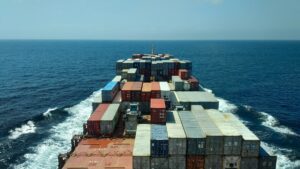On 15th March European finance Ministers (ECOFIN) approved a general approach on the Carbon Border Adjustment Mechanism (CBAM), endorsing the compromise document agreed a few days before during the informal European Council in Paris.
CBAM is a tariff instrument that applies a carbon price to certain goods imported in the EU, with the goal of offering an alternative protection to certain sectors (steel, cement, fertilisers, aluminium and electricity) against competition from extra UE products, where these don’t pay a carbon price equivalent to the ETS. This protection aims to reduce the risk of carbon leakage from the application of the ETS, even though there is no evidence to support this risk so far, as shown by the European Commission report to the European Parliament in April 2020.
CBAM aims to replace the protection currently offered to these sectors by the allocation of free ETS allowances, which has historically dampened the market incentive to decarbonise, and to provide an incentive for the decarbonisation of third countries.
The agreement approved by ECOFIN leaves the Commission’s proposal substantially unchanged, only applying limited technical changes. These include the introduction of a minimum threshold of application set at €150 and the introduction of a central register of CBAM declarants. The latter is a positive element which can encourage a uniform and coherent application of the measure throughout the EU. Certain reporting obligations for the Commission are also introduced.
The agreement however does not tackle the more substantive issues with CBAM. It does not for example touch on the issue of the removal of ETS quotes, something that the Environment Council (ENVI) of the 17 March also did not discuss.
In the face of pressure from some of the industries covered by CBAM to maintain both the free ETS allocation and the CBAM protection, it is important to establish a clear timetable for the elimination of free ETS allowances in step with the gradual introduction of CBAM. It is crucial that any double protection is avoided, as this would undermine the main reason CBAM was created, and would also be incompatible with WTO rules.
The ECOFIN agreement also does not touch on the issue of export support, an issue mainly pushed by Germany, or on the issue of the allocation of CBAM proceeds, which is left to the ‘own resources’ process.
The opportunity was therefore missed to reserve at least part of the economic resources raised by CBAM for the decarbonisation of third countries, and to include an exemption for the Least Developed Countries. This risks to reinforce third countries’ perception that CBAM is a protectionist tool that aims to generate economic resources for the EU by taking advantage of its dominant trade position. The lack of the necessary support for third countries is also in contrast with the multilateral spirit of international cooperation and climate justice enshrined in the Paris Agreement.
In order to highlight that the goal of CBAM is purely climate-related, it would be important to direct the economic resources generated by this instrument towards aiding third countries to decarbonise hard-to-abate sectors, helping them to be less exposed to CBAM in the future. Without this, CBAM rather than being an instrument that encourages the decarbonisation of third countries, risks to actually cut out the least developed countries from the EU market, reducing the resources that these countries have available to decarbonise, fostering mistrust and division.
Photo by Marek Piwnicki on Unsplash







